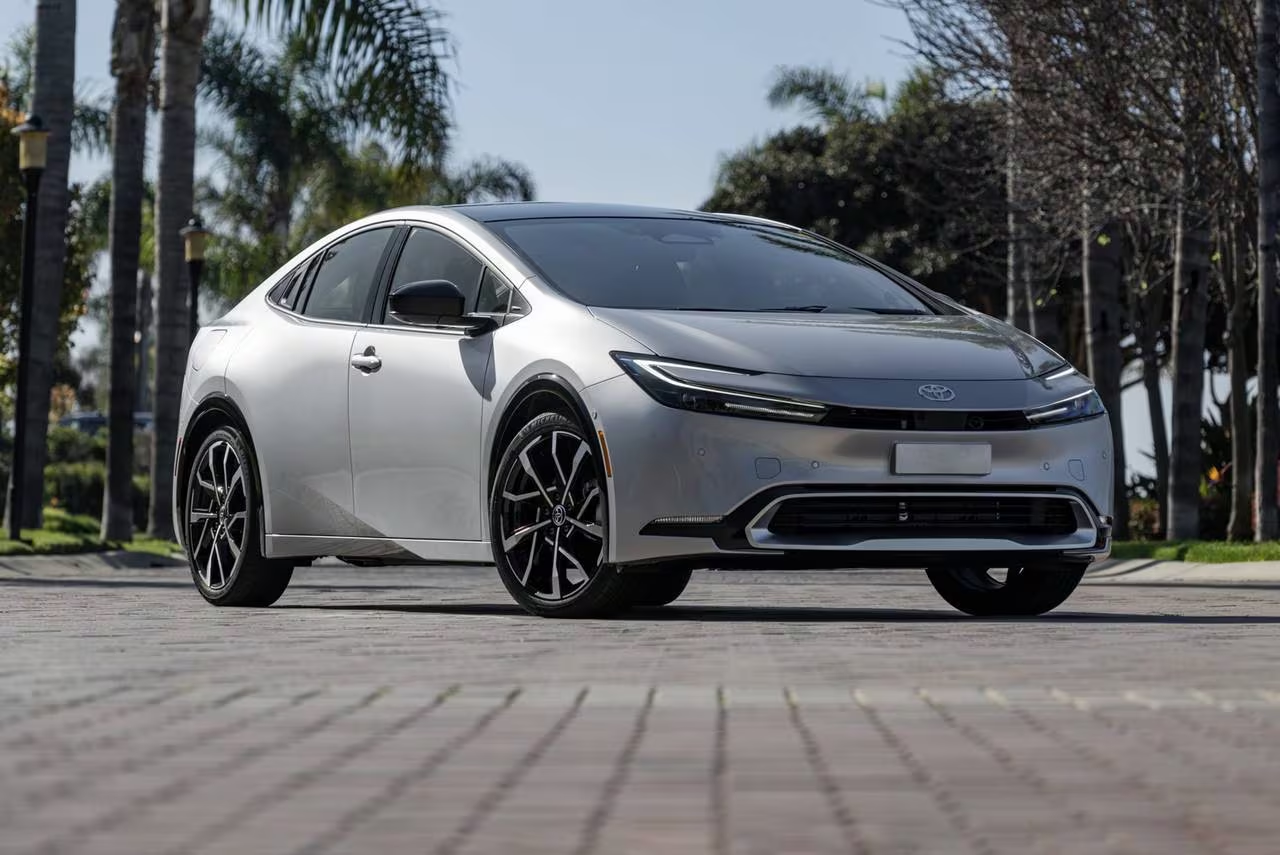There’s plenty to appreciate about cars that are affordable, dependable, and built to last. This isn’t about cheap cars in the outdated sense those barebones vehicles that felt more like punishment than transportation.
The days of basic cars with hand-crank windows, rubber flooring, and no air conditioning are behind us.What we’re focusing on are affordable vehicles that still deliver quality.
These are cars that meet both your desires and necessities, perform their duties without fuss, and only demand routine upkeep like oil changes and occasional repairs.
Among them are compact economy models such as the Toyota Corolla, Nissan Versa, and Mitsubishi Mirage but the list doesn’t stop there. It also includes a few Teslas, a Lexus, and even the performance-driven Toyota Supra.
Cars With No Hidden Repair Costs
To create this ranking, we sourced data focusing on vehicles with the lowest costs for maintenance and repairs.
The data featured estimates for yearly expenses, projected 10-year totals, and the chances of encountering a major repair. From there, we arranged the vehicles based on their average total maintenance cost over 10 years.
Toyota Camry
- 10-Year Cost: $4,203
- Annual Costs: $160 in Year One, $766 by Year 10
- Chance of Needing Major Repair: 11.9%
The Toyota Camry is known for its low operating expenses and dependable performance over the long haul.
It stands out as one of the rare mid-size models that still provides a V6 engine option alongside the standard four-cylinder.
The 2025 Toyota Camry marks a significant evolution for one of the best-selling sedans in the U.S., ushering in the ninth generation with a bold redesign and a big powertrain shift.
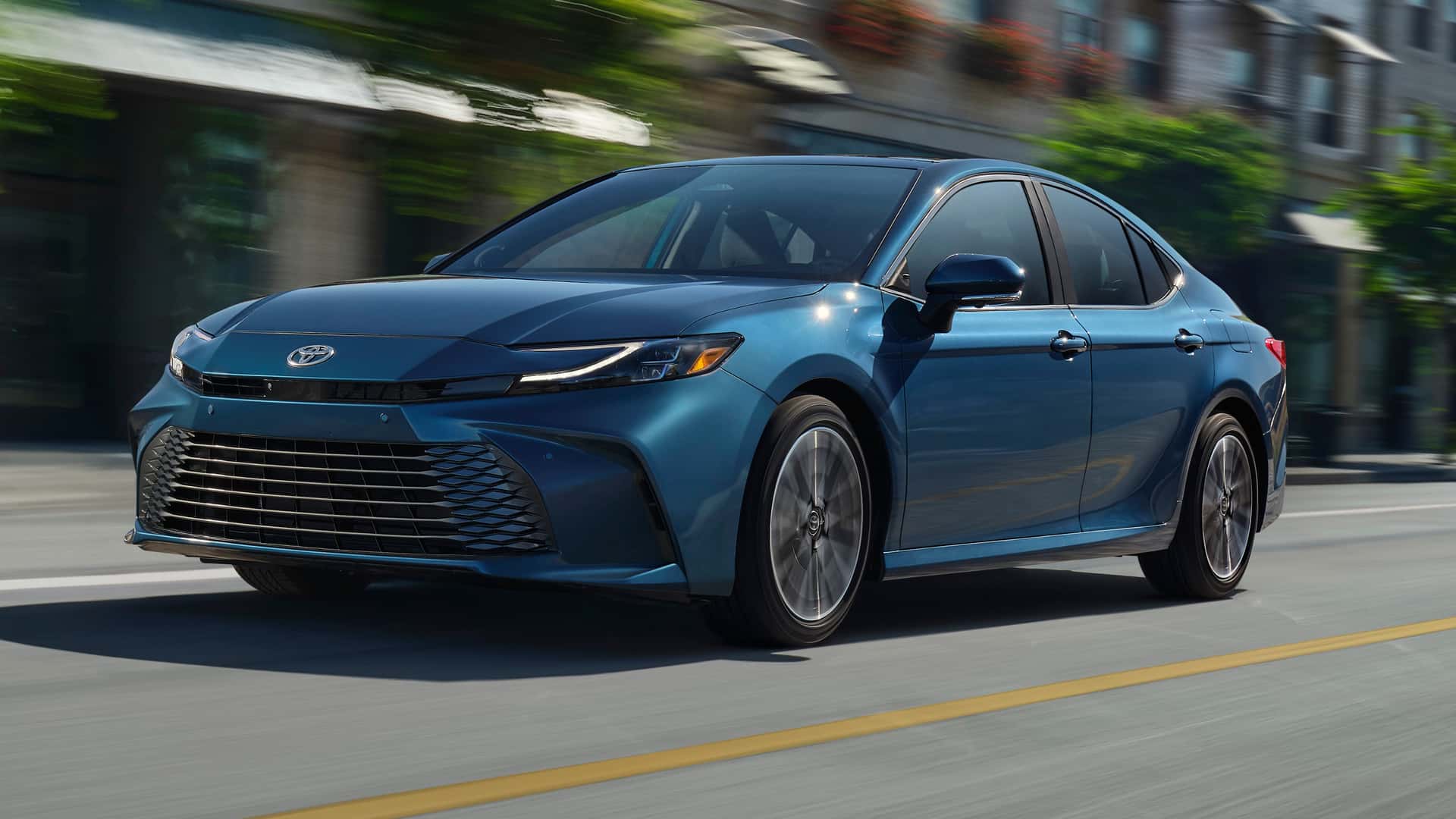
Gone are the days of choosing between gas and hybrid models—every 2025 Camry now comes standard as a hybrid. The updated lineup features fresh exterior styling, a revised interior with available tech like a 12.3-inch touchscreen, and an optional low-speed hands-free driving system.
This full hybrid-only setup pairs a four-cylinder engine with Toyota’s latest hybrid system to produce 225 horsepower in front-wheel-drive models, a notable increase over the previous generation’s hybrid and standard gas engines.
Opting for the new all-wheel-drive system adds a second electric motor in the rear and boosts output to 232 horsepower. However, this change also means the V6 engine has been dropped entirely from the Camry lineup.
The Camry’s strong points remain its excellent fuel economy, quiet and spacious interior, composed ride, and ease of use. It’s not without its flaws, though. The engine can sound coarse under hard acceleration, and the front seat comfort could be improved. Still, the redesign brings meaningful upgrades.
The Camry is more refined, and Toyota has added new tech and safety features across the board, including standard wireless smartphone integration. midsize cars—thanks to its hybrid efficiency.
While the Camry Hybrid badge is technically gone, Toyota hasn’t abandoned hybrid technology; it’s made it the standard. If you thought sedans were dead, Toyota clearly disagrees, and the 2025 Camry makes a strong case for keeping them alive.
Also Read: Top 10 EV Features That Come in Useful in Daily Commute
Toyota Prius Prime
- 10-Year Cost: $4,098
- Annual Costs: $164 in Year One, $736 by Year 10
- Chance of Needing Major Repair: 11.2%
The plug-in hybrid (PHEV) version of the Toyota Prius hybrid fills the gap between traditional gasoline-only vehicles and fully electric cars.
It can travel up to 25 miles using only battery power before transitioning to hybrid mode, where it delivers an estimated 54 mpg combined in city and highway driving.
When Toyota unveiled the new Prius Prime plug-in hybrid and its standard Prius counterpart at the start of the 2023 model year, it caught nearly everyone off guard. The redesigned Prius ditched its long-criticized look in favor of a sleek, modern design that turned it into a visual standout.
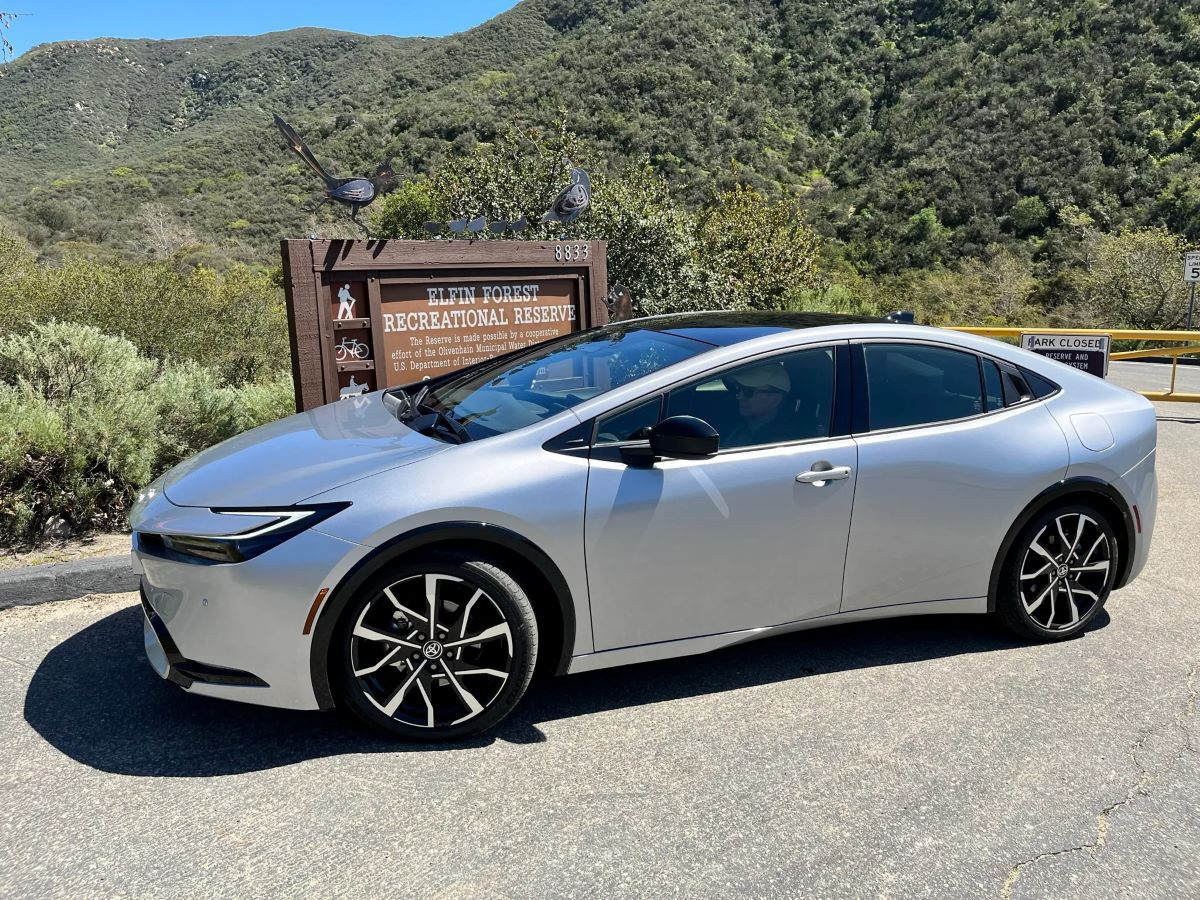
The transformation wasn’t just skin-deep—the Prius Prime plug-in hybrid (PHEV) also received a significant upgrade under the hood. Its powertrain, now consisting of a gasoline four-cylinder engine and two electric motors, produces a combined 220 horsepower.
That’s a massive 99-horsepower increase over the previous generation. In addition to being significantly quicker, the 2024 Prius Prime now delivers 19 more miles of electric-only driving range, making it both faster and more efficient.
Toyota didn’t just focus on efficiency with the latest Prime—they turned it into a plug-in hybrid that balances performance and visual appeal. Both the 2024 Prius Prime and the standard model earned spots on our 10Best Cars list and our 2024 Editors’ Choice list.
Following its complete redesign in 2023, the Prius Prime enters 2024 unchanged. Pricing starts at $34,110 for the base SE model and climbs to $40,805 for the top-tier XSE Premium, depending on trim and options.
The lineup includes three trims—SE, XSE, and XSE Premium—all of which reflect the car’s new performance-oriented personality. Our recommendation would be the mid-tier XSE, which comes with upgrades like keyless entry, a power tailgate, heated front seats, and an auto-dimming rearview mirror.
These features are added on top of standard equipment like an 8.0-inch touchscreen infotainment system, heated steering wheel, blind-spot monitoring, adaptive cruise control, lane centering, and automatic high-beam headlights.
All Prius Prime models use a 2.0-liter four-cylinder gasoline engine rated at 160 horsepower, working alongside two electric motors.
One motor drives the front wheels while the other controls the planetary gearset, which manages engine output in a way similar to a continuously variable automatic transmission. Altogether, the system delivers 220 horsepower—more than what you get in a base Mazda 3, Honda Civic Si, or Subaru Impreza.
During testing, the Prius Prime accelerated from 0 to 60 mph in 6.7 seconds using both gas and electric motors. Running on electric power alone, it reached the same speed in 11.2 seconds.
Currently, the Prius Prime is offered only with front-wheel drive, but Toyota may introduce an all-wheel-drive version in the future. If that happens, expect it to include an extra electric motor powering the rear axle.
Toyota Corolla
- 10-Year Cost: $4,087
- $148 in Year One, $755 by Year 10
- Chance of Needing Major Repair: 11.9%
A longtime favorite among practical car buyers, the Toyota Corolla may not stand out for flashiness, but it performs its role efficiently and dependably.
The 2025 Toyota Corolla continues its legacy as one of the most recognizable and widely driven vehicles on the road.

For 2025, the Corolla sees minimal changes but still offers a dependable package. Highlights include easy-to-use controls, a smooth and comfortable ride, and excellent fuel economy.
However, it’s not without its shortcomings. The Corolla suffers from slow acceleration, elevated road noise at highway speeds, and limited rear headroom compared to some of its rivals.
New for this year is the FX Special Edition, which is based on the SE grade and adds a sporty edge with a rear spoiler, lowering springs, 18-inch black-painted alloy wheels, and blacked-out exterior trim.
The Corolla remains part of the 12th generation introduced in 2020 and now offers a 10.5-inch touchscreen on the FX and XSE trims. While this generation continues for now, a full redesign seems inevitable in the near future.
That upcoming update will likely bring refreshed styling, a more modern interior, and updated tech to help the Corolla keep pace with an increasingly competitive compact segment.
Despite its aging platform, the Corolla still delivers on value. Cost-to-drive estimates show the Corolla LE averaging $109 per month in fuel, compared to $160 per month for the average midsize car.
While it may not turn heads, the Corolla has built its reputation on reliability, affordability, and simplicity—and for many drivers, that’s exactly what they’re looking for.
Toyota Prius
- 10-Year Cost: $4,008
- Annual Costs: $155 in Year One, $727 by Year 10
- Chance of Needing Major Repair: 11.2%
The Toyota Prius hybrid is among the most fuel-efficient vehicles available, boasting an EPA-estimated 58 mpg in the city and 53 mpg on the highway. Additionally, it offers owners the benefit of low maintenance and repair expenses.
The Toyota Prius comes with just one engine choice, but it’s a solid performer. Beneath the bonnet is a 2.0-litre petrol engine paired with an electric motor, delivering a combined output of 220bhp.
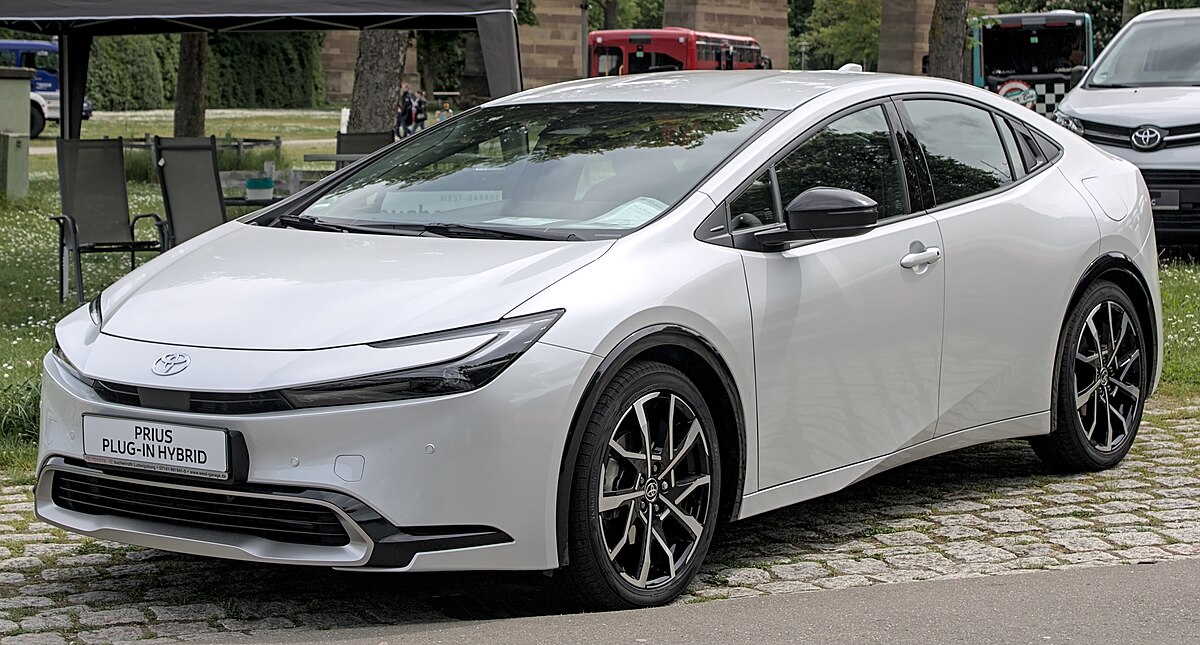
In our testing, the Prius accelerated from 0 to 60mph in 6.9 seconds, matching the performance of the VW Golf eHybrid tested on the same day.
In hybrid mode, the Prius begins moving from a standstill using only the electric motor. As you pick up speed, the petrol engine joins in. When both systems work together, the Prius delivers a prompt response during sudden acceleration and feels noticeably more energetic than a Golf eHybrid, especially when the latter’s battery is depleted.
Operating in electric-only mode, the Prius has no trouble handling stop-and-go traffic using just the electric motor. However, when transitioning to higher speeds, you’ll need to apply more pressure to the accelerator to maintain pace.
Equipped with a 13.6kWh (usable capacity) battery, the Prius boasts an official electric-only range of up to 44 miles. In our real-world testing, we achieved 37.6 miles in a top-tier Excel model fitted with 19-inch wheels.
The Design trim, which rides on smaller 17-inch wheels, is expected to slightly improve on this figure. Regardless of the version, both outperform the Peugeot 308 PHEV’s official 35-mile electric range.
To aid in battery efficiency, the Prius includes regenerative braking as standard. This feature recovers energy when you lift off the accelerator and helps recharge the plug-in hybrid battery.
The car’s default adaptive setting uses this system to slow the vehicle automatically when approaching bends or to maintain a safe distance from the vehicle ahead.
Also Read: 5 Trucks With the Best Cold Weather Reliability and 5 That Freeze Up Fast
Tesla Model 3
- 10-Year Cost: $3,587
- Annual Costs: $169 in Year One, $610 by Year 10
- Chance of Needing Major Repair: 8.6%
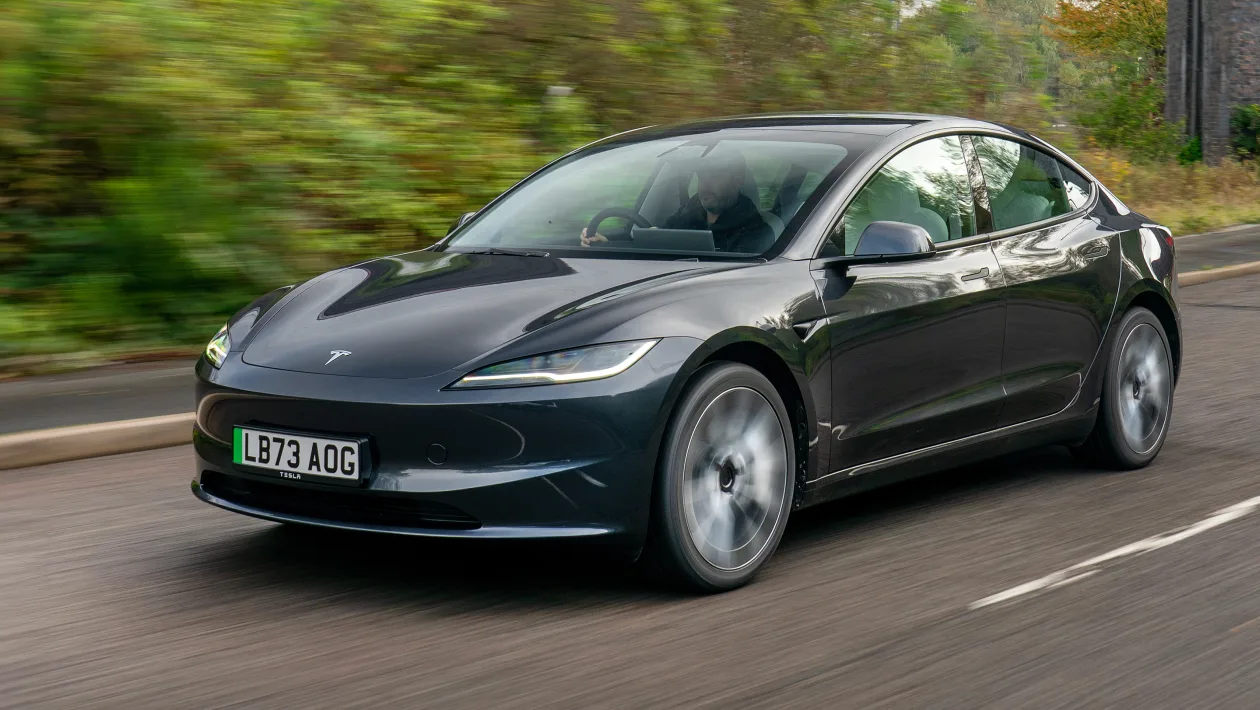
Smaller than the Model S, the Tesla Model 3 has the lowest overall anticipated maintenance and repair costs of any vehicle currently available. Most routine service appointments require little more than a tire rotation.
The Tesla Model 3 has firmly established itself as a staple family car, earning a spot alongside household names like the VW Golf and Nissan Qashqai among vehicles favored for the school run.
In 2023, the Model 3 underwent a substantial refresh that introduced sharper, sleeker exterior styling, improved interior refinement, and, most notably, the addition of longer-range variants.
As a highly sought-after electric alternative to models like the BMW 3 Series and Audi A5—or electric competitors such as the Hyundai Ioniq 6 and Polestar 2—the Model 3 has redefined the family saloon segment.
It holds a similar cultural and technological impact to what the iPhone had in the mobile phone world: fewer buttons, more screens, and a symbol of status all on its own.
But unlike an iPhone, the Tesla Model 3 boasts impressive battery performance across its range. The Long Range Rear-Wheel Drive version especially shines for long-distance travel, with Tesla claiming it can deliver up to 436 miles on a single charge—putting it among the longest-range electric vehicles currently available in the UK.
Despite this exceptional range, the Model 3 remains significantly more affordable than most other long-range EVs. Yet, it’s not just the value that makes it stand out. With its slim headlights and distinct C-shaped taillights, the latest iteration of the Model 3 features an even bolder identity than the version that first launched.
Cars With Expensive Surprise Fixes
Luxury cars can be incredibly costly when purchased new, but they also suffer from steep depreciation in the used market.
This depreciation provides enthusiasts with a more accessible way to own these ultra-luxurious, highly comfortable vehicles that many might otherwise find out of reach.
However, if you decide to buy a used luxury car, it’s important to be cautious about the ongoing expenses.
Without careful consideration, your seemingly affordable luxury purchase could quickly turn into a costly financial burden.
We’ve put together a list highlighting some of the most expensive used luxury cars to maintain. This selection includes a blend of classic luxury sedans and luxury SUVs, all from a range of esteemed European brands.
Additionally, some of these vehicles come from manufacturers known for issues with either poor reliability or high maintenance costs.
2022 Porsche Macan
The 2022 Porsche Macan, Porsche’s smaller SUV and the third Porsche featured on this list, remains a popular choice on the used market despite the introduction of an electric version.
The older internal combustion engine models are still widely available and offer impressive performance, with engine options ranging from a 2.0-liter turbocharged inline-4 to a 2.9-liter twin-turbocharged V6 delivering between 261 and 434 horsepower.

However, as expected from a Porsche, maintaining a Macan comes with a high price tag. According to RepairPal, the average annual maintenance cost is around $1,265, making it one of the most expensive luxury SUVs to upkeep.
If high maintenance expenses are a major concern, potential buyers might want to consider alternatives, as the Porsche Macan’s upkeep can be quite costly.
2012 Mercedes-Benz GL450
The 2012 Mercedes-Benz GL450, now known as the GLS-Class, is one of the largest and most luxurious SUVs on the market, competing with high-end models like the Bentley Bentayga and Rolls-Royce Cullinan.
This spacious 7-seater rivals the size of other massive SUVs such as the Chevrolet Suburban but stands out with a much higher level of elegance and refinement compared to its American competitors.

Despite its classier image as a V8 SUV, the GL450 comes with significant maintenance costs. The average annual maintenance expense for a 2012 GL450 is $1,293, placing it among the most expensive luxury vehicles to maintain.
Potential buyers will need to carefully consider whether the prestige of the Mercedes-Benz badge is worth the steep upkeep before making a purchase.
The 2012 Mercedes-Benz GL-Class is offered in three trims, each defined by its engine configuration. The GL350 is powered by a turbodiesel V6 that reviewers noted feels slightly sluggish off the line but delivers solid performance once in motion.
The GL450 and GL550 both come equipped with V8 engines, with critics highlighting the strong performance of both, particularly the more potent GL550. Every GL-Class model features a seven-speed automatic transmission and all-wheel drive.
Fuel economy varies by trim: the GL350 achieves an EPA-estimated 17 mpg in the city and 21 mpg on the highway, which is impressive for the class. The GL450 returns 13/18 mpg, which aligns with class averages, while the GL550 posts slightly lower figures at 12/17 mpg.
All models come standard with a height-adjustable air suspension that, according to reviewers, delivers a smooth ride over rough surfaces. Critics also noted the GL-Class’ precise steering and minimal body roll when cornering sharply.
Inside, automotive journalists praised the 2012 GL-Class for its luxurious interior, describing it as visually stunning and crafted with premium materials. The SUV seats seven across three rows.
Testers reported that the first and second rows offer excellent comfort, while the third row, though functional, feels cramped for adult passengers—a common drawback in three-row SUVs. Cargo capacity tops out at 83.3 cubic feet, which is slightly below average for the segment.
Still, critics appreciated the GL-Class’ flat-folding rear seats, which simplify expanding the cargo area and loading gear. Standard features for the 2012 GL-Class include heated and power-adjustable front seats, dual-zone automatic climate control, Bluetooth connectivity, and Mercedes’ COMAND infotainment system with a 7-inch display.
Optional equipment includes leather upholstery, a rearview camera, navigation, a rear-seat entertainment system, a premium 12-speaker Harman Kardon audio system, and blind spot monitoring.
2022 Audi A8
The 2022 Audi A8 is a staple in the luxury car market and is often considered one of the most underrated luxury vehicles available.
Unlike many flashy cars that rely heavily on advanced technology to impress, the A8 appeals to those who prefer understated elegance whether it’s old money or individuals who want to keep a low profile and focus on their business quietly.
This makes the A8 a favored choice for discreet CEOs around the world, as well as for King Charles III when he was still the Prince of Wales.
While the A8 is undeniably one of the best luxury cars you can buy, whether new or used, it is also known for being one of the most expensive to maintain.
The average annual maintenance cost for a 2022 A8 is $1,298, which is even higher than that of its rival, the Mercedes-Benz S-Class.
With maintenance expenses this steep, owning an A8 requires a strong desire for the car and a willingness to handle the costs that come with it. The 2022 Audi A8 undergoes a significant transformation, reinforcing its status as the brand’s premier luxury sedan.

With a bolder exterior design, a more luxurious interior, and cutting-edge technology, the A8 remains a top contender in the full-size luxury sedan segment, competing against the likes of the Mercedes-Benz S-Class, Lexus LS, and BMW 7 Series.
For this model year, Audi introduces a redesigned grille, updated front and rear bumpers, fresh wheel designs, and new LED headlights and taillights.
The S Line package is now standard, adding sportier styling elements, while the interior benefits from new trim options and available rear-seat entertainment displays. Buyers also have four new exterior paint colors to choose from: District Green, Firmament Blue, Manhattan Gray, and Ultra Blue.
Audi positions the A8 as the ideal German luxury limousine, offering only the long-wheelbase A8L variant to maximize rear-seat space and comfort. Inside, the cabin emphasizes quiet refinement, crafted with high-quality materials and state-of-the-art digital displays.
The standard adaptive air suspension ensures a smooth ride that matches the comfort of the interior, while the predictive adaptive air suspension—available on the high-performance S8—delivers one of the most composed and refined driving experiences in the segment.
While the regular A8 provides a serene and sophisticated ride, it has been critiqued for lacking excitement, particularly during the 2019 Car of the Year evaluation. In contrast, the S8 stands out with its engaging dynamics and powerful engine, making it the recommended choice for those who want the most from Audi’s flagship.
In 2022, Audi drops the plug-in hybrid version of the A8 for the U.S. market, leaving a single powertrain option: a 3.0-liter V6 engine producing 340 horsepower and 369 lb-ft of torque.
This engine enables the A8 to accelerate from 0 to 60 mph in 5.3 seconds. The EPA estimates its fuel economy at 19 mpg in the city and 28 mpg on the highway.
For those seeking superior performance, the Audi S8 delivers exceptional power without compromising luxury. It features a 4.0-liter twin-turbocharged V8 that produces 563 horsepower and 590 lb-ft of torque, mated to an eight-speed automatic transmission and Audi’s Quattro all-wheel-drive system.
During testing, the S8 sprinted from 0 to 60 mph in just 3.7 seconds, impressive for a vehicle with a curb weight of over 5,200 pounds. The EPA rates the S8 at 14 mpg city and 23 mpg highway, offering a total range of 369 miles on its 21.7-gallon tank.
Technology is a standout in both the A8 and S8, with a suite of luxury and convenience features that reflect Audi’s leadership in automotive innovation. Highlights include massaging seats, a rear footrest with heating and massage capabilities, four-zone automatic climate control, and an air fragrance system.
The cabin is equipped with a dual-display setup: a 10.1-inch touchscreen for infotainment and an 8.6-inch screen for climate controls. Audi’s Virtual Cockpit with a 12.3-inch digital instrument cluster and an optional head-up display enhance the driver’s interface.
The A8 also supports Android Auto and Apple CarPlay, allows for the connection of up to eight devices, and features Amazon Alexa compatibility and signal enhancement for mobile phones. Audio options include a standard 17-speaker Bang & Olufsen system, with a 23-speaker upgrade available for those seeking a more immersive sound experience.
In terms of space, the A8 is competitive with its rivals, particularly excelling in rear legroom, where it edges out the Mercedes-Benz S-Class by half an inch. However, its cargo space falls slightly behind the competition.
The A8 offers 41.5 inches of front legroom and 44.3 inches in the rear, compared to the S-Class’s 41.7 and 43.8 inches respectively. In terms of trunk capacity, the A8 provides 12.5 cubic feet, slightly less than the S-Class’s 12.9 and significantly less than the Lexus LS’s 16.9 cubic feet.
Safety is another strong suit for the A8, with a robust array of standard and available driver assistance systems. Standard features include forward collision warning with automatic emergency braking, automatic high beams, and lane departure warning.
Optional technologies expand to adaptive cruise control with traffic sign recognition, lane keep assist, blind-spot monitoring, and both side and rear cross-traffic alert. Due to its lower production volume, the A8 has not been rated by either the IIHS or NHTSA.
Pricing for the 2022 Audi A8 starts at $87,595. Adding the Executive package, which includes upgraded wheels and advanced safety technologies like adaptive cruise control with traffic jam and turn assist, costs an additional $3,400.
2008 Mercedes-Benz G500
The 2008 Mercedes-Benz G500 is one of the most recognizable SUVs on the market. Originally developed as a stripped-down military vehicle, Mercedes-Benz later created a civilian version with added creature comforts.
This civilian G-Wagen evolved into a luxurious and plush SUV, while still maintaining the genuine off-road capability of its military-spec predecessor.

It essentially represents Mercedes-Benz’s take on the same concept as the Range Rover, and many enthusiasts actually prefer it over its British rival.
Despite being reliable and capable, the G-Class is expensive to maintain. The average annual maintenance cost for a 2008 G500 is around $1,461.
Like the GL450 mentioned earlier, potential buyers will need to decide if the prestige of the Mercedes badge is worth the high upkeep costs.
2022 Land Rover Discovery Sport
The 2022 Land Rover Discovery Sport is one of Land Rover’s newest models, introduced in 2014 to replace the Freelander 2 (known in the US as the LR2), which had long been the brand’s smaller SUV option.
True to its name, the Discovery Sport is designed to serve as a smaller companion to the larger Discovery. Initially, it used Ford engines but later transitioned to Jaguar Land Rover’s own Ingenium engines.
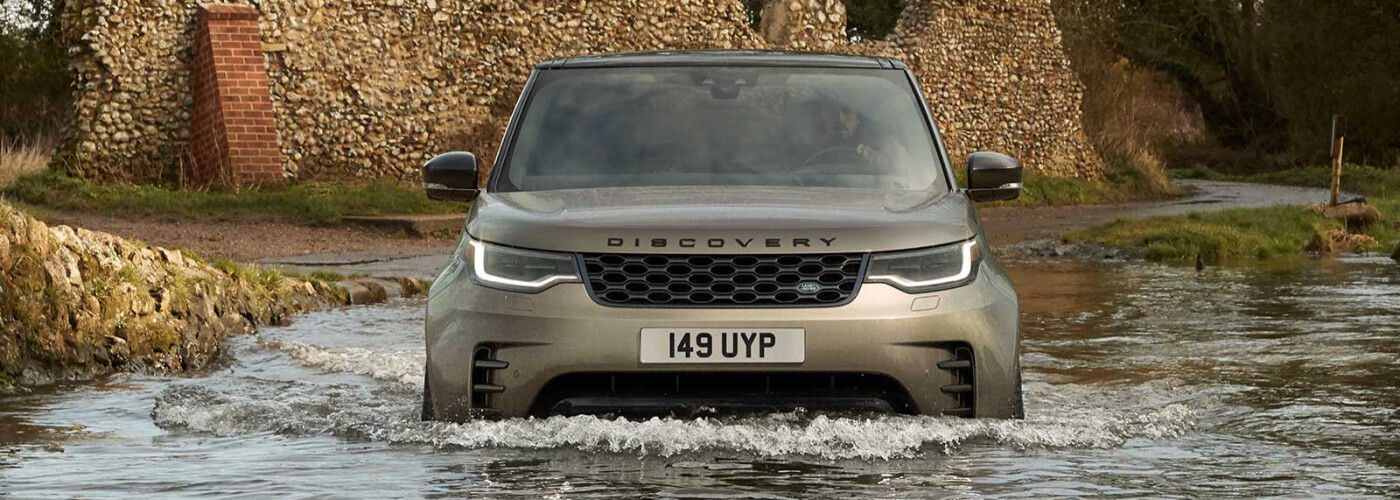
Given Land Rover’s well-known reputation for high running costs and questionable reliability, it’s not surprising that the Discovery Sport tops this list.
The average annual maintenance cost for a 2022 Discovery Sport is a staggering $1,780 higher than many sports cars. It is also significantly more expensive to maintain than every other vehicle on this list.
If you’re looking for a luxurious family SUV that won’t drain your wallet on upkeep, the Land Rover Discovery Sport is likely a model you should avoid.
The Discovery Sport compact luxury crossover shares its platform with the Range Rover Evoque, although it is slightly longer. Land Rover takes advantage of this extra space by offering an optional third row of seats, providing a unique 5+2 seating configuration in the Discovery Sport.
The second-generation Discovery Sport, which debuted in 2019, introduces several updates for the 2022 model year, including features that were previously optional becoming standard. These updates include wireless device charging, heated front seats, a power liftgate, and keyless entry, all of which are now standard across the entire lineup.
Additionally, two new exterior paint colors—Ostuni Pearl White and Lantau Bronze metallic—are now available. The previously offered Family Pack is now renamed the Third Row Pack, and it includes the third-row seating as well as cooling vents and USB ports for all three rows of passengers.
While we are still waiting for our chance to test the second-generation Discovery Sport, we anticipate that it will address several issues that were present in the first-generation model. The earlier version was known for having a rough-shifting transmission, a noisy cabin, and an uninspiring interior design.
Despite these drawbacks, the first-generation Disco Sport was successful in areas such as handling, steering, and off-road capability—elements that we hope will carry over to the second generation. While the first-gen Discovery Sport was a decent SUV, it didn’t quite meet the high expectations set by the Land Rover brand.
For the 2022 model year, the Discovery Sport is offered with a single powertrain option: a 246-horsepower 2.0-liter turbocharged four-cylinder engine paired with a nine-speed automatic transmission and an all-wheel-drive system. The 2022 Discovery Sport’s fuel economy is rated by the EPA at 19 mpg in the city and 23 mpg on the highway.
This fuel efficiency is lower than some competitors, such as the Volvo XC60, which is rated at 21/28 mpg, and the Acura RDX AWD, which achieves 21/27 mpg, when each is equipped with their respective 2.0-liter turbocharged four-cylinder engines.
The Pivi Pro infotainment system, which debuted in the 2021 Jaguar F-Pace and XF, is featured in the Discovery Sport. Pivi Pro is designed to be customizable, with Land Rover claiming that it simplifies access to and activation of commonly used functions.
The system can support up to two Bluetooth connections simultaneously and is designed to stay up to date with over-the-air updates.
In terms of safety features, the 2022 Discovery Sport comes standard with automatic emergency braking, lane departure warning, and a 360-degree view camera. The SE model offers additional safety features, including automatic high beams, blind-spot monitoring, rear cross-traffic alert, and traffic sign recognition.

